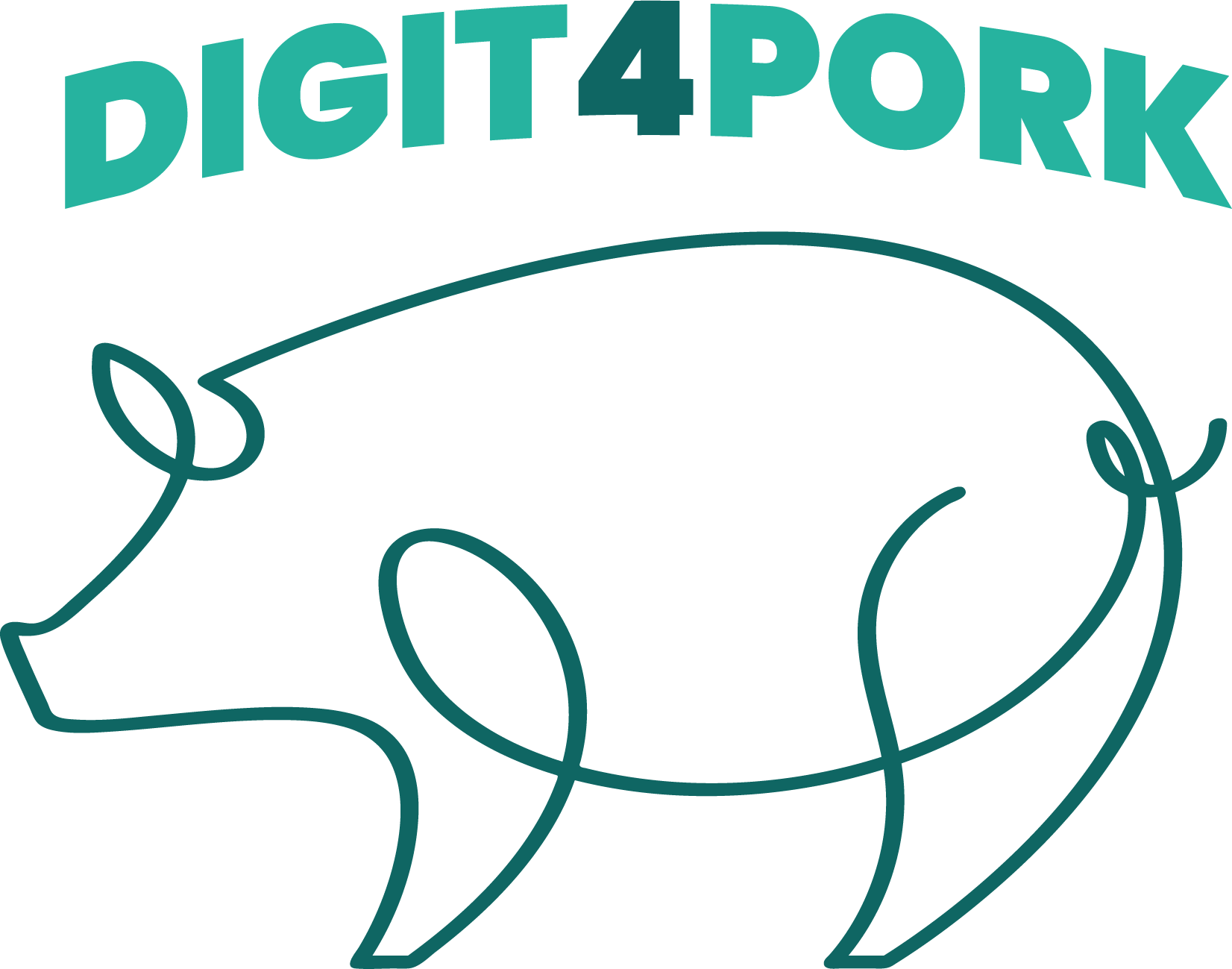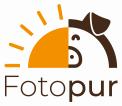
DIGIT4PORK Operational Group: Digital twin for coordinating pig fattening
- Type Operational group
- Status In progress
- Execution 2024 -2027
- Assigned Budget 599.889,66 €
- Scope Supraautonómico
- Autonomous community Aragón; Navarra, Comunidad Foral de
- Main source of financing CAP 2023-2027
- Project website GO DIGIT4PORK
The main objective of the GODIGIT4PORK project is the optimization and coordination of the supply chain in the pig sector through the implementation of a digital twin, specifically focused on the production of fattening pigs that supply a slaughterhouse and its associated cutting room, so that livestock companies can know much more accurately the composition of their final product and how it changes depending on the slaughter weight, being able to improve feed efficiency by designing more adjusted diets.
The implementation of a digital twin for the pork supply chain is an innovative approach to digitally transform and optimize the pork industry, providing both economic and social benefits by improving operational efficiency, product quality and environmental sustainability. The digital replica of the system will be developed based on the verification of the maximum growth potentials of the different lines and will be validated in the field in experimental farms of the different GO companies.
The implementation of a digital twin for the pork supply chain is an innovative approach to digitally transform and optimize the pork industry, providing both economic and social benefits by improving operational efficiency, product quality, and environmental sustainability.
This digital twin is a near-real-time virtual replica, meaning it is updated with the same frequency as the data from the final stage of the pork supply chain, covering fattening and carcass cutting, with the aim of improving production efficiency, traceability, and decision-making.
The rapid availability of data and advanced analytics thanks to the digital twin enables informed decision-making in critical situations or to optimize the supply chain in general. Early identification of potential problems, such as production or logistics bottlenecks, can be addressed before they become crises.
The objective of this activity focuses on an analysis of data collection to support decision-making in the production stages covered by the project: fattening and cutting. The methodology is based on an "AS IS" description of what is currently being done to define "TO BE" how digital data collection should or could be and the variables involved. This includes intermediate and final calculations leading to obtaining the main KPIs or key production indicators for each stage and for the overall technical (i.e., meat yield) and economic (i.e., economic efficiency) process. The main objective of this activity is the controlled fattening of pigs and their cutting in order to characterize the economic performance of a carcass and its economic value from a comprehensive perspective, ensuring continuity in the production process (fork to farm), discriminating the production cost from the farm to cutting. The main objective of this activity is to obtain a digital (i.e., virtual) representation of the production system in near-real time. The main objective of this activity is to validate the usefulness and effectiveness of the proposed digital twin in the field.
The main objective of the GODIGIT4PORK project is the optimization and coordination of the supply chain in the pig sector through the implementation of a digital twin, specifically focused on the production of fattening pigs that supply a slaughterhouse and its associated cutting room, so that livestock companies can know much more accurately the composition of their final product and how it changes depending on the slaughter weight, being able to improve feed efficiency by designing more adjusted diets.
Implementing a digital twin for the pork supply chain is an innovative approach to digitally transform and optimize the pork industry, delivering both economic and social benefits by improving operational efficiency, product quality and environmental sustainability.
This digital twin is a virtual replica in near real time, meaning that it is updated with the same frequency as the data from the final part of the pork supply chain, covering the fattening and cutting of carcasses, with the aim of improving production efficiency, traceability and decision-making.
A. Pirineo, A. Obanos, Ganadera de Caspe and Cárnicas Iruña, and the UdL, will design a protocol to study the characteristics of the different genetic lines that each company will contribute to the project and from which a digital twin of the fattening and cutting stages in the room will be created, aimed at optimising the coordination of slaughter with the shipment of fattened pigs according to the differential behaviour due to genetics and weight.
The main objective of the GODIGIT4PORK project is to optimize and coordinate the supply chain in the pork sector through the implementation of a digital twin, specifically focused on the production of fattening pigs that supply a slaughterhouse and its associated cutting room. This will allow livestock companies to understand much more accurately the composition of their final product and how it changes depending on the slaughter weight, allowing them to improve feed efficiency by designing more tailored diets.
The implementation of a digital twin for the pork supply chain is an innovative approach to digitally transform and optimize the pork industry, providing both economic and social benefits by improving operational efficiency, product quality, and environmental sustainability. This digital twin is a near-real-time virtual replica, meaning it is updated with the same frequency as the data from the final stage of the pork supply chain, covering fattening and carcass cutting, with the aim of improving production efficiency, traceability, and decision-making.
A. Pirineo, A. Obanos, Ganadera de Caspe and Cárnicas Iruña, and the UdL, will design a study protocol for the characteristics of the different genetic lines that each company will contribute to the project and from which a digital twin of the fattening and cutting stages in the room will be created, aimed at optimizing the coordination of the slaughterhouse with the shipment of the fattened pigs according to the differential behavior by genetics and weight.
- Coordinator/entity name: NAVARRE AGRO-FOOD CLUSTER ASSOCIATION (NAGRIFOOD)
- Postal address: PARQUE TOMAS CABALLERO, 2, 6TH FLOOR, 31006 PAMPLONA
- Coordinator/entity email: saguirre@nagrifoodcluster.com
- Telephone: 948113700
The main features of the proposal are:
- Supply Chain Coordination: The digital twin covers the final stages of the pork supply chain, where most of the product's commercial value is generated, from pig fattening to carcass cutting. This facilitates comprehensive and detailed coordination of each process involved.
- Connectivity and interoperability: Design a Data Space that allows for the integration of new sensors as they are acquired, monitoring each relevant point in the chain and collecting data in real time. This can include information on pig health, transport conditions, feed inventory, and processing capacity in the slaughterhouse and cutting room.
- Planning and Optimization: Using artificial intelligence algorithms, transport routes are planned, pig feeding is optimized, processing capacity is adjusted based on demand, and potential bottlenecks in the supply chain are predicted.
- Traceability: Each pig is uniquely identified at the slaughterhouse, and its progress throughout the slaughter process is accurately recorded. This improves traceability, facilitating the rapid identification of problems and the recall of products if necessary.
- Informed Decision-Making: The data space and advanced analytics integrated into the digital twin provide supply chain managers with key information for strategic decision-making, such as adjusting production levels, optimizing logistics, or anticipating potential problems on the farm or in the cutting room.
- ASOCIACIÓN CLÚSTER AGROALIMENTARIO DE NAVARRA (NAGRIFOOD)
- ASOCIACIÓN CLÚSTER AGROALIMENTARIO DE NAVARRA (NAGRIFOOD)
- AGROPECUARIA OBANOS , S.A.
- AGROPECUARIA DEL PIRINEO, S.A.
- Sociedad Cooperativa Ganadera de Caspe S.R.L.
- CARNICAS IRUÑA, S.A.






